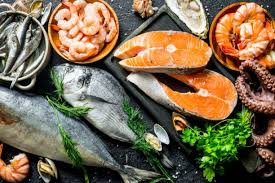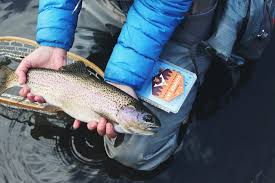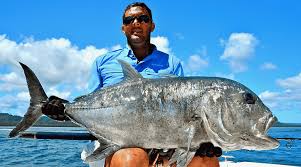“Fish” is a term used to describe all living produce of water, including fin-fish and poikilothermic vertebrates that breathe by means of gills and move by means of fins. This category of water produce is regarded as “fish” because it dominates 90% of aquatic food resources.
However, other aquatic living produce of water that are economically important to man are reptiles (crocodiles, sea turtles), mammals (whales, tortoises, dolphins, seals), other aquatic invertebrates (crustaceans: shrimps, crabs, lobsters), mollusks (oyster clams, periwinkles, cuttlefish), and aquatic plants such as seaweeds and coral reefs.
Read Also: Recommended Volume of Water for Fish Farming on a Concrete Pond
Food for Human Consumption

Fish, particularly fin-fish, is regarded as first-class protein, providing 16% of the world population’s protein, containing abundant calorific value, vitamins, phosphorus, and other essential elements for good growth and maintenance of a healthy body.
Other food fish products are shelled mollusks (clam, mussel, oyster, winkle, and scallop) and crustaceans (shrimp, lobster, crayfish, crab), eggs (roe) of various species of fish, marine invertebrates (sea urchins, shrimp), squid, octopus, sea cucumber, and certain jellyfish species.
Marine plants also serve as food (seaweeds) as well as a suspending, thickening, stabilizing, and emulsifying agent in dairy products (Irish Moss). In 2002, about 76% of estimated world fisheries were used for direct human consumption.
Fish products include canned products, fresh and frozen products, pickled, spiced, and marinated products, salted and/or dried products, and prepared/secondary products.
Read Also: Concrete Pond Management: Steps to take before introducing the Fish in the Water
Non-Food Fish Products such as Fish Meal and Fish Oil as Dietary Supplements in Livestock Production

In 2002, their manufacture accounted for 24% of world fisheries production.
Some parts of the fish body are used for purposes such as leather and polishing materials (skin of some cartilaginous fishes, e.g., carp), and scales for coating glass beads and artificial pearls. Non-food fish products, such as fish oil, are used in the manufacture of soap and other pharmaceutical products.
Seahorse, starfish, sea urchin, and sea cucumber are used for traditional medicine in China. Eating fish and seafood has been reported to reduce the risk of chronic illness in Canada. Pigments such as tyrian purple are made from marine snails, and sepia from the inky secretions of cuttlefish. Phycocolloids (extracted from seaweed) and certain fine biochemicals have valuable industrial uses.
Fish glue, made by boiling the skin, bones, and swim bladders of fish, is valued for use in several products, including illuminated manuscripts and Mongolian war bows. Isinglass, a substance obtained from the swim bladders of fish (especially sturgeon), is used for clarifying wine and beer.
Fish emulsion is a fertilizer emulsion produced from the fluid remains of fish processed for fish oil and fish meal industrially. Knotted wrack is used for making liquid fertilizer.
Shark skin and ray skin, which are covered with tiny teeth (dermal denticles), are used as sandpaper. The aforementioned skins are also used for leather, with shark skin leather used in the manufacture of hilts for traditional Japanese swords. The skin of hagfish is used to make “eel leather,” which is converted into “eelskin” products in Korea.
Whole fish, e.g., clupeids, anchovy, capelin, and other discards (wastes), and shrimp heads are used to produce animal feeds (fish meal, silage).
Fish waste product (offal; consists of skins, heads, eviscera/internal organs, bone/cartilage) is used for organic farming, fish meal production (48-52% protein), liquefied fish (by adding enzymes), composting (high in nitrogen), commercial baits (buffalo fish heads, carp heads, whole carp, sucker heads, shad), production of formulated bait (crab, crayfish, lobster), and formulated feed (aquaculture).
Provision of Income and Employment
Fisheries and aquaculture provide full-time, part-time, and occasional primary sector employment. Aquaculture offers more opportunities than capture fisheries. Worldwide, in 2002, this workforce represented 2.8% of the 1.33 billion people economically active in agriculture.
Recreational and Aesthetic Value of Fish
Fish is desired for recreational fishing through angling (shortfin mako, longfin mako, white shark, bluefin tuna), fishkeeping, and sport fishing of both freshwater fish (bass, trout, salmon, catfish, yellow perch) and saltwater fish (swordfish, tuna, marlin, halibut, salmon).
Fish is caught indirectly for human consumption in industrial fisheries.
Fish also serve as ornamentals and for exhibition, such as freshwater fishkeeping, marine aquaria, brackish water aquaria, and home aquaria.
Pearls and mother-of-pearl are valued for their luster, while spa treatments derived from fish are rich in minerals and enzymes. Some seafood restaurants keep live fish due to cultural beliefs, serving as deities and religious symbols.
Fish Trade and Its Commercial Importance
Fish trade includes live fish, pearl trade, and dry cod. In 2002, the total world trade of fish and fishery products increased to USD 58.2 billion, up 5% relative to 2002 and marking a 45% increase since 1992.
Scientific and Medical Applications of Fish and Marine Products
Bacteriological agar, cultivated from Gelidium (a type of red algae), is used for culturing bacteria and other microorganisms in most laboratories. Hagfish are currently of special interest in genetic analysis of relationships between chordates.
The mucus secreted by the fish contains strong, thread-like fibers similar to spider silk, which have potential uses as new biodegradable polymers, space-filling gels, and as a means of stopping blood flow in accident victims and surgery patients.
Do you have any questions, suggestions, or contributions? If so, please feel free to use the comment box below to share your thoughts. We also encourage you to kindly share this information with others who might benefit from it. Since we can’t reach everyone at once, we truly appreciate your help in spreading the word. Thank you so much for your support and for sharing!

